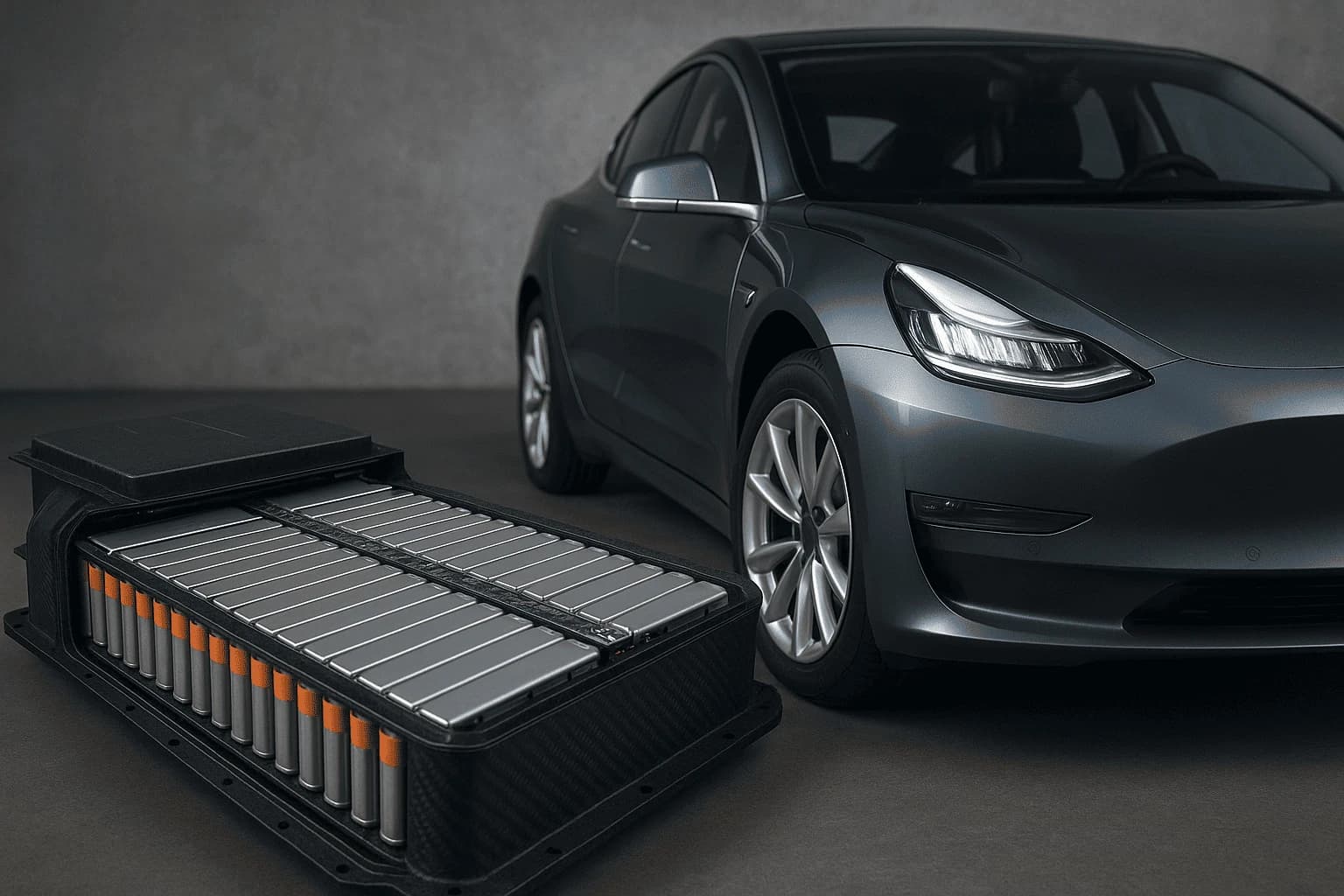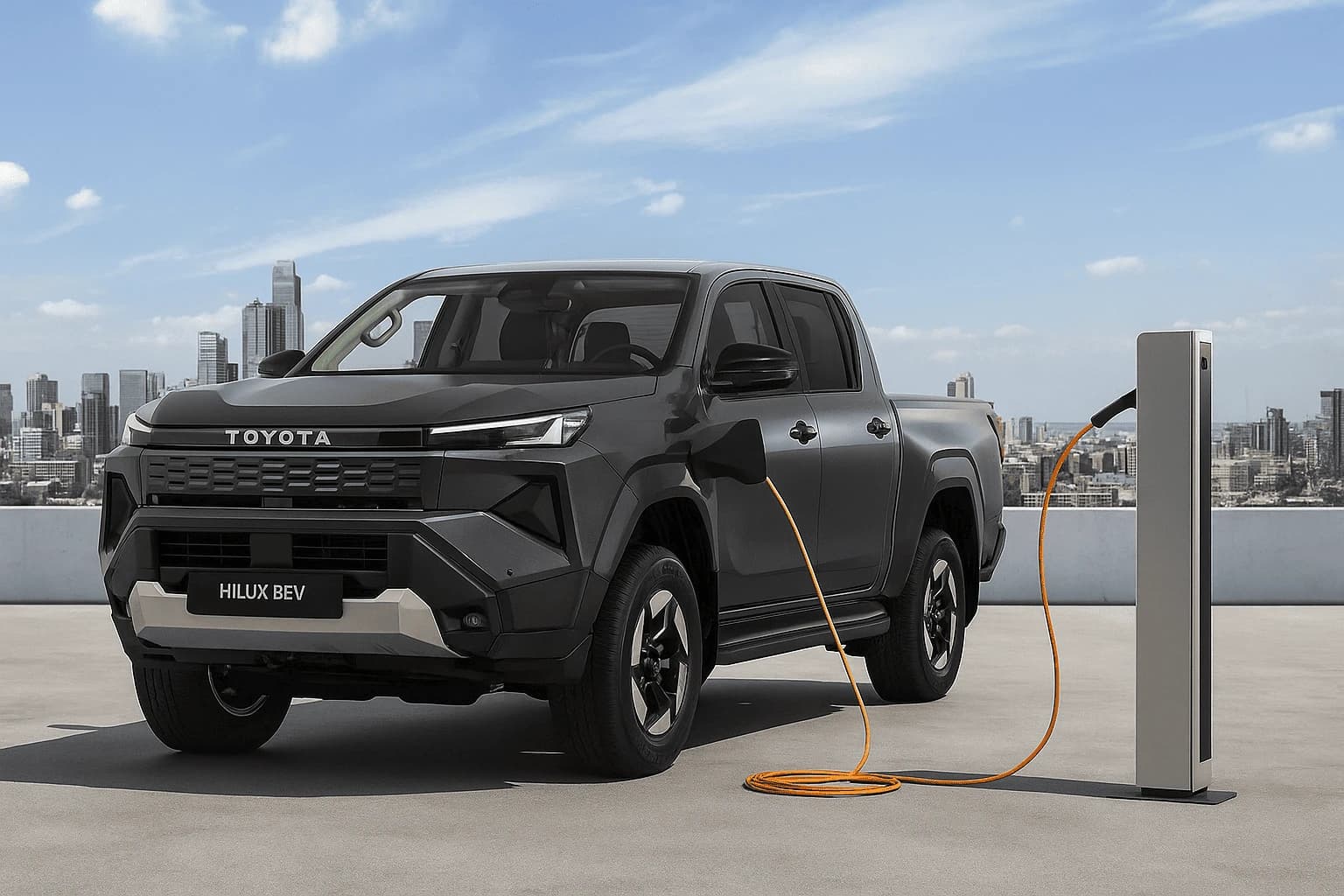
* All product/brand names, logos, and trademarks are property of their respective owners.
As the electric vehicle (EV) revolution accelerates, one truth has become crystal clear: lithium-ion batteries, while groundbreaking, are no longer enough. Automakers and researchers are now racing to go beyond traditional energy storage, exploring solutions that not only power vehicles but also become part of their very structure. Enter Structural Battery Composites (SBCs) — a game-changing EV innovation that could reshape the design, efficiency, and performance of next-generation electric vehicles.
Structural battery composites represent a radical shift in how we think about energy storage. Instead of housing batteries in heavy, space-consuming packs, SBCs integrate energy storage directly into the chassis and body panels of a vehicle. The concept is both simple and revolutionary: what if your car’s roof, hood, or floor pan could act as a battery and a structural component at the same time? This blend of form and function not only reduces weight but could potentially eliminate the need for bulky, centralized battery packs altogether.
In 2025, structural battery composites are gaining serious momentum. From being named one of the World Economic Forum's Top 10 Emerging Technologies to groundbreaking research at institutions like Imperial College London and commercial prototypes by aerospace firms, SBCs are quickly moving from lab curiosity to industry disruptor.
But are they ready to replace lithium-ion packs anytime soon? What technical challenges must be overcome before your next EV uses its own body as a battery?
In this deep dive, we explore what structural battery composites are, how they work, and whether they truly have the potential to transform the future of electric mobility. Strap in — the future of EVs might be lighter, smarter, and more integrated than you ever imagined.
Structural Battery Composites, often referred to as SBCs, flip the script on conventional battery design. Instead of isolating a battery pack as a heavy, standalone unit tucked into the floor or trunk, SBCs embed energy storage directly into the vehicle’s structure. This idea is sometimes described as “massless” energy storage — not because the components are weightless, but because they serve multiple purposes, effectively reducing overall system weight.
Imagine a car where the roof, doors, or floor don’t just hold up the vehicle, but also power it. That's the promise of SBCs — to integrate the battery into the load-bearing parts of the car, merging structure and function into a single, multifunctional material.
The core of SBC innovation lies in carbon fiber-reinforced composites — ultra-strong, lightweight battery materials already popular in aerospace and performance vehicles. These carbon fibers serve as conductive electrodes, often layered with special polymer-based electrolytes that can store and transfer energy like a traditional lithium-ion cell.
Here's a basic breakdown of how SBCs work:
Carbon fibers = active anode or cathode material
Polymer matrix = electrolyte and structural binder
Glass fibers or separators = insulation and mechanical integrity
Researchers are developing laminated composite layers that alternate between structural and energy-storing functions, forming what’s essentially a battery built like a sandwich — strong, thin, and energy-dense.
Conventional EV batteries are centralized, heavy, and modular. SBCs, by contrast:
Distribute weight throughout the vehicle body
Eliminate bulky enclosures, cooling systems, and housing
Potentially reduce weight by up to 30–40%, improving range and performance
Free up internal space, making EVs more aerodynamic and spacious
In short, SBCs redefine energy storage as integrated infrastructure — transforming every structural component into a contributor to power.
One of the most compelling advantages of Structural Battery Composites (SBCs) is their potential to dramatically reduce vehicle weight — a critical factor in electric vehicle (EV) performance. Traditional lithium-ion battery packs are dense and bulky, often accounting for up to 25–30% of an EV’s total mass. By embedding energy storage into the vehicle's frame, SBCs can eliminate the need for separate battery housings, thereby reducing structural redundancies.
The result? EVs that are not only lighter but also more efficient. A lighter vehicle requires less energy to accelerate and maintain speed, which directly translates to longer driving range, better handling, and reduced wear on tires and suspension systems. This is especially valuable for commercial EV fleets and long-range applications like trucks and buses, where energy-to-weight ratio is critical.
In engineering, multifunctionality is gold. SBCs exemplify this by turning passive materials into active energy systems. A single composite panel can serve as:
A load-bearing structure
An energy storage unit
A thermal buffer or vibration damper
This fusion of mechanical and electrical roles opens the door for simplified vehicle design. Engineers can reduce the number of components, streamline assembly lines, and improve crash safety by distributing impact loads more efficiently across battery-integrated panels.
Moreover, SBCs have shown comparable energy densities to some commercial lithium-ion cells, while simultaneously meeting key mechanical strength thresholds. That’s a rare combination in materials science — and it’s a big reason why aerospace and defense industries are equally invested.
While EVs are the headline use case, SBCs are already making waves in aerospace, unmanned aerial vehicles (UAVs), and space systems. Drones, for instance, benefit immensely from weight savings. NASA and Airbus are actively researching SBCs for satellites and aircraft, aiming to extend flight times and reduce launch weights.
By integrating energy systems into fuselages and wings, aircraft can achieve better fuel economy, reduced maintenance, and extended missions — all while preserving or even enhancing structural integrity.
Despite their impressive potential, Structural Battery Composites (SBCs) face several serious obstacles before they can become mainstream in electric vehicle (EV) production. These challenges span manufacturing, safety, regulation, and economics — and they’re critical to understanding why SBCs aren’t in your car just yet.
One of the biggest challenges is that SBC production is complex and expensive. Most structural batteries are developed in laboratories using advanced carbon fiber layups, specialized electrolytes, and precision layering — none of which are currently cost-effective at scale.
Carbon fiber, while lightweight and strong, is still significantly more expensive than steel or aluminum, making cost a major barrier. Additionally, producing a component that acts as both a battery and a structural part requires highly controlled environments, meticulous quality control, and long development cycles.
Automakers, already balancing tight margins and battery sourcing issues, are hesitant to take on another unproven supply chain, especially one without mature industrial tooling or off-the-shelf parts.
When batteries are embedded in a car’s body, how do you repair them after a crash? What happens if the panel is punctured or the electrolyte leaks? These are real questions facing SBC development teams.
Unlike modular battery packs that can be easily replaced or isolated, SBCs may require entire structural components to be swapped in case of failure — which raises cost and complexity. Moreover, thermal runaway, a well-known battery risk, becomes a structural hazard when battery cells are built into the vehicle’s frame.
Current automotive safety standards are not yet adapted to account for energy-storing structures. New testing protocols, crash simulations, and fire safety procedures must be developed and standardized globally.
Finally, there’s the issue of end-of-life. SBCs are difficult to disassemble because their energy and structural layers are chemically and physically bonded. This makes recycling challenging, especially compared to traditional battery packs that can be modularly disassembled.
There’s also concern about carbon fiber production’s environmental impact, which is energy-intensive. For SBCs to be viable in a circular economy, researchers will need to develop green composites or recyclable carbon fiber alternatives.
For all the promise structural battery composites (SBCs) hold, a crucial question remains: When will we actually see them in commercial EVs? The answer, like much in cutting-edge materials science, depends on a blend of technical readiness, industry appetite, and regulatory evolution.
SBCs are no longer just theoretical. Imperial College London leads one of the world’s most advanced SBC research programs, having developed carbon fiber-based structural lithium-ion batteries that can withstand structural loads and charge cycles simultaneously. Collaborations with institutions like Chalmers University of Technology (Sweden) and Korea Advanced Institute of Science and Technology (KAIST) are pushing the envelope further — building functional SBCs into drone wings, satellites, and even prototype vehicle panels.
Meanwhile, aerospace companies like Airbus and BAE Systems are testing SBCs for UAVs and defense platforms, where weight savings directly translate to mission endurance. On the auto side, Volvo and Tesla have shown interest in “cell-to-chassis” designs — a stepping stone toward SBC adoption, though still not quite the same.
The challenge? These efforts remain in the pre-commercial prototype or pilot phase, with limited vehicle integration.
Most SBCs are currently at TRL 4–6 — meaning they’ve been validated in lab and small-scale environments, but not yet field-tested or production-ready for automotive environments. For widespread EV adoption, components must meet automotive-grade durability standards, endure millions of vibration cycles, survive crashes, and remain thermally stable across extreme climates.
Industry experts predict it could take until 2030 or later before SBCs see limited rollout in niche EV segments — like electric motorcycles, delivery drones, or specialized commercial vehicles.
SBCs are often compared with solid-state batteries, which also aim to enhance safety, density, and lifecycle. But unlike SBCs, solid-state tech benefits from a clearer supply chain pathway and more investment from top automakers (Toyota, BMW, Ford).
What SBCs offer — that no other battery technology does — is mechanical functionality, making them complementary to future platforms that prioritize integration, weight reduction, and aerodynamic freedom.
Structural battery composites (SBCs) represent one of the most exciting, albeit complex, frontiers in the evolution of electric vehicles. Their promise to merge structure and storage — turning doors, floors, and chassis into active power sources — pushes the boundary of what’s technically and creatively possible in transportation design.
The benefits are clear: dramatic weight savings, improved energy efficiency, enhanced design flexibility, and potential applications across aerospace, defense, and automotive sectors. The appeal is especially strong in industries where every gram counts and where traditional battery systems limit innovation.
But challenges remain. From production costs and repair complexity, to recycling concerns and regulatory unknowns, SBCs still face a long journey before they can rival mainstream lithium-ion or solid-state batteries in everyday EVs.
What’s undeniable is that the conversation around SBCs is accelerating — thanks to high-profile research from Imperial College, endorsements from the World Economic Forum, and strategic investments from aerospace leaders. As materials science, battery engineering, and manufacturing techniques converge, SBCs may well carve out a role in the next generation of vehicle design — especially in specialized, high-performance or lightweight electric platforms.
The big question now isn't if SBCs are the future, but how far and fast we can go to make them real.
Will your next EV drive on batteries… or be the battery itself?

11 November 2025
No comments yet. Be the first to comment!